Perhaps we can, or want to, dispense with the while( altogether by making a better estimate of focal('s w= arg in a world where r, as ground truth, isn't available. Were it available, we could readily derive direct value of w
r <- rast(system.file("ex/elev.tif", package="terra"))
# and it's variants
r2 <- r
r2[45:60, 45:60] <- NA
freq(r2, value=NA) - freq(r, value=NA)
layer value count
1 0 NA 256
sqrt((freq(r2, value=NA) - freq(r, value=NA))$count)
[1] 16
which might be a good value for w=, and introducing another variant
r3 <- r
r3[40:47, 40:47] <- NA
r3[60:67, 60:67] <- NA
r3[30:37, 30:37] <- NA
r3[70:77, 40:47] <- NA
rm(r)

We no longer have our ground truth. How might we estimate an edge of w=? Turning to boundaries( default values (inner)
r2_bi <- boundaries(r2)
r3_bi <- boundaries(r3)
# examining some properties of r2_bi, r3_bi
freq(r2_bi, value=1)$count
[1] 503
freq(r3_bi, value=1)$count
[1] 579
freq(r2_bi, value=1)$count/freq(r2_bi, value = 0)$count
[1] 0.1306833
freq(r3_bi, value=1)$count/freq(r3_bi, value = 0)$count
[1] 0.1534588
sum(freq(r2_bi, value=1)$count,freq(r2_bi, value = 0)$count)
[1] 4352
sum(freq(r3_bi, value=1)$count,freq(r3_bi, value = 0)$count)
[1] 4352
Taken in reverse order, sum[s] and freq[s] suggest that while the total area of (let's call them holes) are the same, they differ in number and r2 is generally larger than r3. This is also clear from the first pair of freq[s].
Now we drift into some voodoo, hocus pocus in pursuit of a better edge estimate
sum(freq(r2)$count) - sum(freq(r2, value = NA)$count)
[1] 154
sum(freq(r3)$count) - sum(freq(r3, value = NA)$count)
[1] 154
(sum(freq(r3)$count) - sum(freq(r3, value = NA)$count))
[1] 12.40967
freq(r2_bi, value=1)$count/freq(r2_bi, value = 0)$count
[1] 0.1306833
freq(r2_bi, value=0)$count/freq(r2_bi, value = 1)$count
[1] 7.652087
freq(r3_bi, value=1)$count/freq(r3_bi, value = 0)$count
[1] 0.1534588
taking the larger, i.e. freq(r2_bi 7.052087
7.652087/0.1306833
[1] 58.55444
154+58
[1] 212
sqrt(212)
[1] 14.56022
round(sqrt(212)+1)
[1] 16
Well, except for that +1 part, maybe still a decent estimate for w=, to be used on both r2 and r3 if called upon to find a better w, and perhaps obviate the need for while(.
Another approach to looking for squares and their edges:
wtf3 <- values(r3_bi$elevation)
wtf2 <- values(r2_bi$elevation)
wtf2_tbl_df2 <- as.data.frame(table(rle(as.vector(is.na(wtf2)))$lengths))
wtf3_tbl_df2 <- as.data.frame(table(rle(as.vector(is.na(wtf3)))$lengths))
names(wtf2_tbl_df2)
[1] "Var1" "Freq"
wtf2_tbl_df2[which(wtf2_tbl_df2$Var1 == wtf2_tbl_df2$Freq), ]
Var1 Freq
14 16 16
wtf3_tbl_df2[which(wtf3_tbl_df2$Freq == max(wtf3_tbl_df2$Freq)), ]
Var1 Freq
7 8 35
35/8
[1] 4.375 # 4 squares of 8 with 3 8 length vectors
bringing in v finally and filling
v <- vect(system.file("ex/lux.shp", package="terra"))
r2_fill_17 <- focal(r2, 16 + 1 , mean, na.policy='only', na.rm = TRUE)
r3_fill_9 <- focal(r3, 8 + 1 , mean, na.policy='only', na.rm = TRUE)
r2_fill_17_cropv <- crop(r2_fill_17, v, mask = TRUE, touches = TRUE)
r3_fill_9_cropv <- crop(r3_fill_9, v, mask = TRUE, touches = TRUE)

And I now appreciate your while( approach as your r2 looks better, more naturally transitioned, though the r3 looks fine. In my few, brief experiments with smaller than 'hole', i.e. focal(r2, 9, I got the sense it would take 2 passes to fill, that suggests focal(r2, 5 would take 4.
I guess further determining the proportion of fill:hole:rast for when to deploy a while would be worthwhile.


